#protostome
Text
What Beaft Shall Ye Be, Early Cambrian Protostome Edition
Descriptions of what, exactly, these options mean in this Lorepost
Here are some example pictures of the options:
"Uzumaki", by Junji Ito
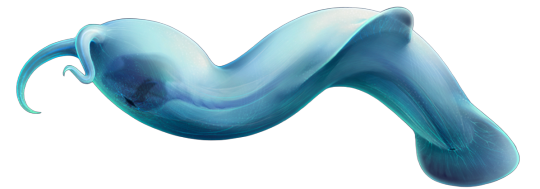

"Fuck this shit," *peels off my own skin*

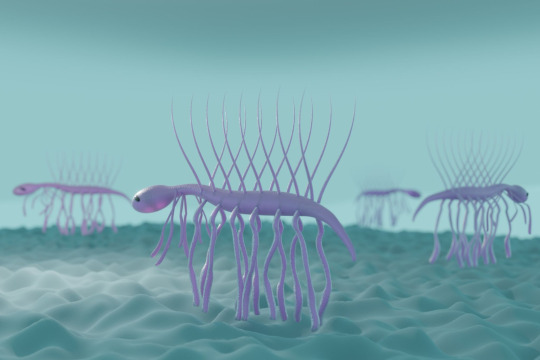
22 notes
·
View notes
Text
im having a moment because I just discovered that sea urchins are more closely related to humans than they are to things like barnacles, clams, snails, jellyfish, corals, and anemones
#for clarification:#sea urchins are part of the same phylum as all vertebrates (deuterostomata)#whereas all those other things are either protostomes or cnidarians#and cnidarians aren't even bilaterans (which deuterostomes and protostomes both are)
11 notes
·
View notes
Text
Favourite animals poll! Round 3
Protostomes won the 2nd round.
Time for Round 3.
It is about the so-called 'super-phyla'* of the Protostomes.
#*aparently super-phyla#*is*#the plural#at least according to wikipedia#favourite animals poll#roubd 3#animals poll#animals#polls#protostomes#super-phyla#ecdysozoans#spiralians
0 notes
Text

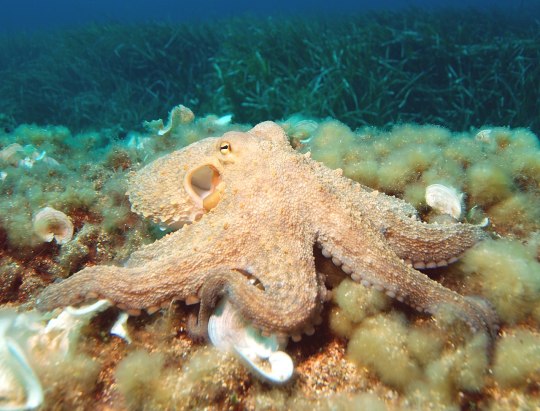

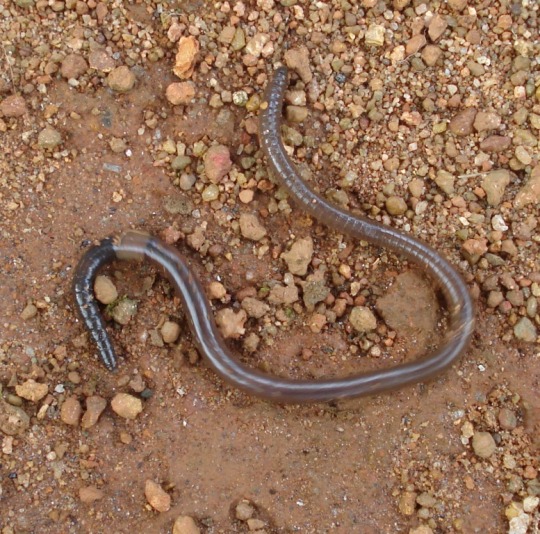

No joke, the actual answer is D, because echinoderms like star fish and sea cucumbers are most closely related to vertebrates. Octopuses are mollusks, barnacles are arthropods, and earthworms are annelids, which are all protostomes. Sea cucumbers and tyrannosaurs are both deuterostomes. The common ancestor of sea cucumbers and dinosaurs lived more recently than the common ancestor of sea cucumbers and any of the other three.
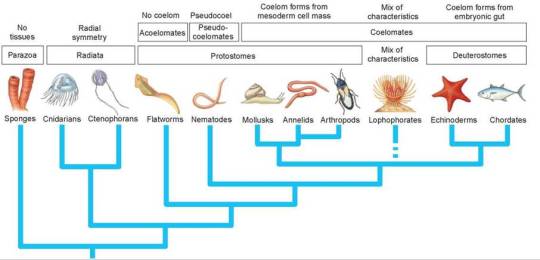
812 notes
·
View notes
Note
this is a 100% genuine question: I’ve been studying the anatomy of dreamkin, mainly the ones that appear to be more human, and I need to know when their anal canal ends and where their inner void (for lack of a better term) begins. this would also apply to their throats; if I looked into a dreamkin’s throat would it appear as human anatomy or something eldritch?
dreamkin are protostomes, meaning that the initial invagination of the gastrula forms the mouth and primitive gut. in organic life, this archenteron would eventually tunnel through to form the anus. most dreamkin do not require a complex enough digestive system to necessitate an "end" at all—they are biologically and physically immortal, and consumption has no material benefit. most cannot consume anything not of the dreaming, but they will eat dreamfood regularly, which is quickly and efficiently reabsorbed into the dreaming itself at the dead-end of the digestive tract.
the corinthian is an interesting exception to this, not in the least because of his two distinct digestive tracts. the first is typical, beginning at his primary mouth and ending at the cecum. the second connects both his eyes at a medial trachea that loops around his "brain" and descends the body cavity to his anus. despite having this secondary "complete" digestive system, he still cannot derive meaningful nutrition from non-dreamfood. he may consume eyes in dreams and in the waking and understand, vicariously, the life he has taken, but he finds no satiation in it, only pleasure. i have, perhaps, underestimated how hungry he is.
45 notes
·
View notes
Note
hi! ik this probably isn't your area of expertise but i'm in kauai atm and i found these slugs, and they reminded me of your leatherleafs, know anything about them? (they're about 6-10 inches long)
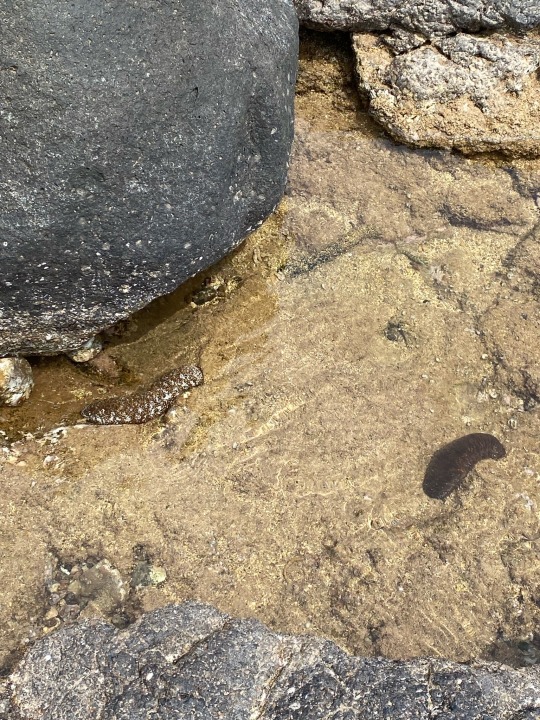
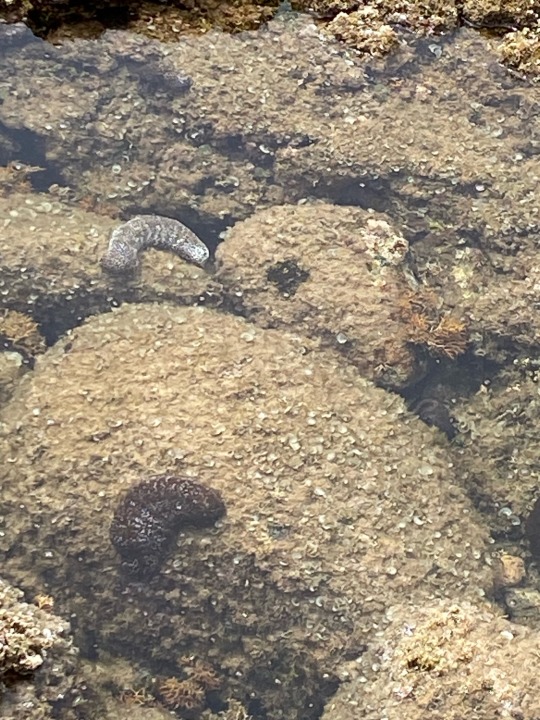
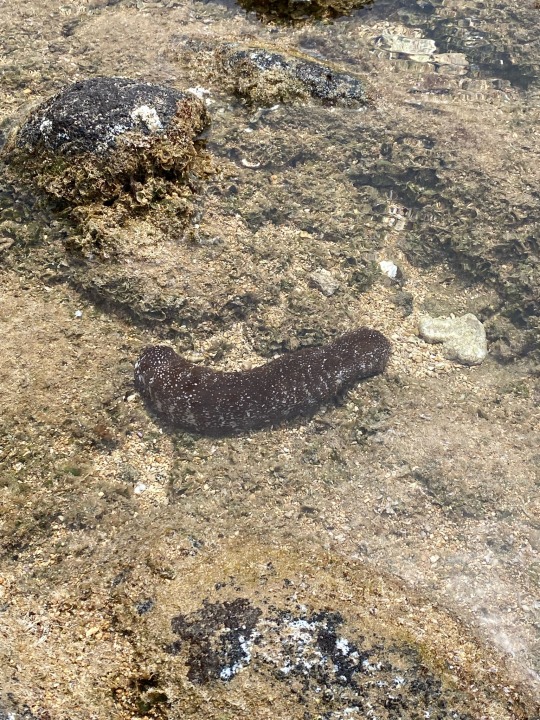
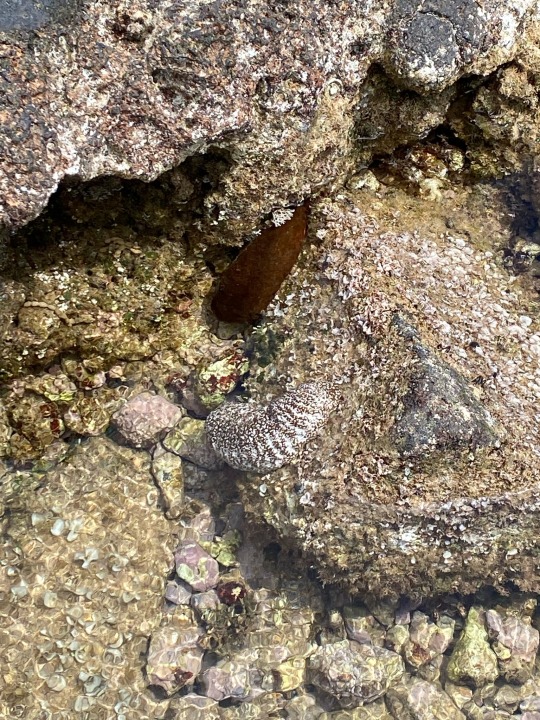
they’re sea cucumbers, and looks like this species:
fun fact, sea cucumbers are more closely related to you than they are to my slugs!
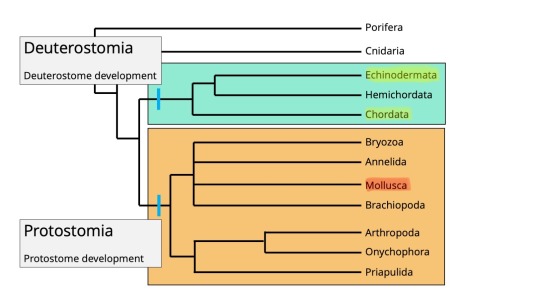
you are a chordate and they are echinoderms; so you’re both deuterostomes (embryo develops anus before mouth). my slugs are protostomes (mouth first)
102 notes
·
View notes
Note
Do you know any cool science facts? Bonus points if the inspire awe and wonder!
As a former science educator, it is my moral duty to have and share cool science facts. ;)
Would you believe that humans are more closely related (evolutionarily speaking) to a sea urchin than to an octopus?
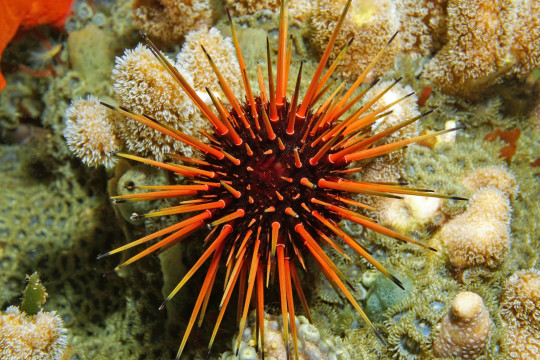
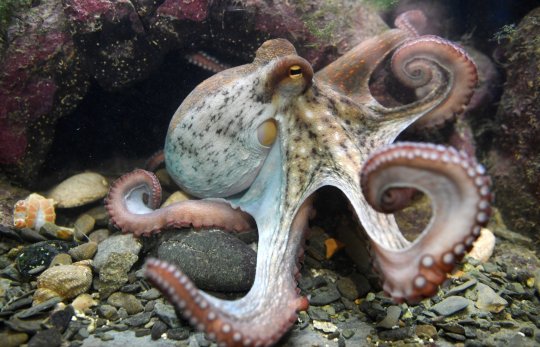
One of our strongest pieces of evidence for this comes from the study of embryonic development, or embryology. Some time after germ cells combine to form a single-celled zygote, the cell divides several times to form a hollow sphere of cells called a blastula. In animals with bilateral body plans (i.e., digestive tract surrounded by a separate internal body cavity, with a mouth at one end and an anus at the other), that digestive tract begins forming as the blastula undergoes gastrulation, a process by which one part of the surface of the sphere turns in on itself.
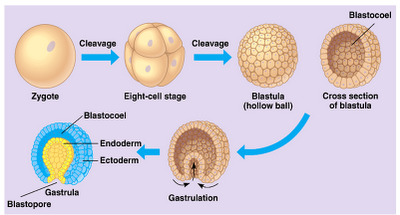
This initial opening into the digestive tract, the blastopore, is either the mouth or the anus. In protostomes ("mouth-first"), the blastopore is the the mouth! As the digestive tract develops, it will eventually form an anus at the other end of the embryo. In deuterstomes ("mouth-second"), the mouth... forms second. The blastopore is the anus.

As it turns out, many worms, slugs, and the like - including molluscs and cephalopods - are protostomes. Deuterostomes then encompass many of the creatures you might name with bilateral body plans (and related, radial body plans like starfish and sea urchins), including arthropods, birds, fish, reptiles, mammals, even tunicates! And humans.
At one point in our development, each and every one of us was nothing more than a butthole. Sometimes it seems some people never progressed past that stage!
8 notes
·
View notes
Text
Top ten vertebrates that are bugs:
10: Hummingbirds
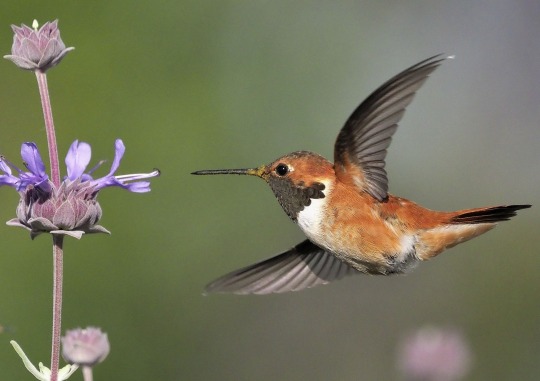
Tiny, pollinators, a million wingbeats a second, some of them are actually just moths, some of them get eaten by mantids. Bones aside, these are bugs
9: Bumblebee bats

Look at it. It is just Too Small
8: Naked mole rats
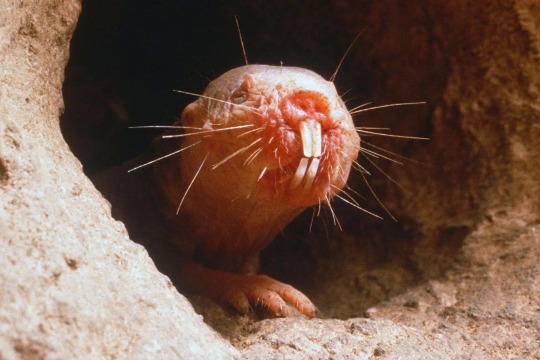
These are the only mammals to be eusocial, like bees and ants! They live collectively in colonies underground, they are immune to cancer, and as the name implies, much like real bugs, they do not wear clothes
7: Pumpkin toadlets

Native to isolated mountain ranges in Brazil, these frogs are extremely clumsy all the time because they are simply Too Small
6: Bugs

Everyone’s favorite nonbinary African- and Nordic-American lagomorph, Bugs is Bugs
5: Lumpfish

As beautiful as they are powerful, these little fish have fins that have evolved to form a suction cup on the bottom of their bellies
4: Lampreys

One of two surviving sorts of jawless fish, lampreys are just worms with bones
3: Pink fairy armadillos

Look at that carapace! Much like many members of the orders hymenoptera and dipthera, these armadillos are actually a type of fairy
2: Elf owls
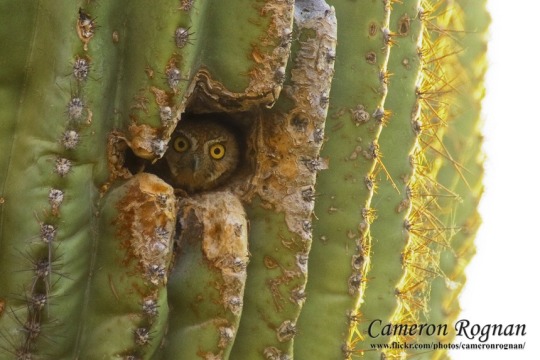
Millions and millions of years ago, a worm in Wormworld was born with its head on sideways. Despite this it managed to reproduce. Some time later one of its descendants compensated for this by being born with its body also on sideways, but in the other direction. This worm was the ancestor of every chordate, including you, me, and everyone on this list. Owls however, including the minuscule elf owl, can turn their heads entirely backwards, so for a few moments, these birds can arrange their bodies like a protostome’s
1: This guy

The name “African p*gmy mouse” contains a slur because biology is still racist sometimes. Nonetheless, the number one spot had to go to a rodent of course, so why not the smallest one? I mean look at this thing. It’s so bug
#bugs#mice#hummingbirds#lumpfish#pumpkin toadlets#lampreys#elf owls#owls#bats#naked mole rats#bugs bunny#armadillos#my posts
103 notes
·
View notes
Text
i think the most surprising thing about taxonomy i learned from metazooa is that we are more closely related to sea urchins than to arthropods and molluscs. like obviously we are not closely related to arthropods but they seem all neatly arranged with their bilaterally symmetric bodies and various limbs and shit, and then the echinoderms all to my vertebrate-chauvinist eyes look like weird collections of body parts piled haphazardly on top of each other, so surely the arthropods are closer?
but it turns out my intution is wrong. first of all echinoderms are also in the fancy bilaterally-symmetric group but also since our common ancestor with them formed anus-first mouth-second and the arthropods are all in the mouth-first group, they (the echinoderms that is) are our closer cousins.
yes really that's the defining features of those taxa. deuterostomes and protostomes, look it up.
11 notes
·
View notes
Note
Midwife who was the only sane frost giant in the room: Ur majesty he's just a baby
Laufey: But look at him hes an asshole!!
Midwife: Ur holding him by the rear end sir
(This is a joke btw)
DHDKDHDJD see the real question we ought to be asking is are jotnar protostomes or deuterostomes
7 notes
·
View notes
Text
so i’m taking a vertebrate zoo course kinda begrudgingly bc i much prefer invertebrates and therefore think vertebrates are comparably kinda lame. but for the first little bit we’ve been talkin bout evolution and phylogeny etc, like protostomes vs deuterostomes and stuff. so we got to talk about my beloved echinoderms!!!!!!! and also those funky little hemichordata worms! and urochordata! fuck yea!! thank u for at least giving me a little taste of my favourite guys before we move on to those loser vertebrates
17 notes
·
View notes
Text
Lorepost: Early Cambrian
You are a Protostome in the early Cambrian. Things have been changing rapidly in your environment. There has just been a mass-extinction event, of which you are one of the lucky few survivors. scientists are unsure of the exact cause or causes but the extinction did come after a long period of global glaciation, ending several million years prior, which could have had an effect.
The rapidly changing times demand your rapid evolution. The three cell-layers your ancestors had (like Kimberella from the previous poll) will no longer suffice. You need more complicated tissues with more complicated functions. Animals from other lineages are more suited to filter-feeding (like the suck tubes) and suspension hunting in the water column (like the murder assholes). Another lineage of note has bilateral symmetry and three tissue layers like you do, but is differentiated mainly by a softer body exterior but with a rod of harder tissue inside its body, protecting its nervous system. That and the fact that their embryos form their butt-hole before forming their mouth-hole. Disgusting. These "Butt-First Soft Speedsters" are probably irrelevant anyways. They may be faster and more mobile, but you brought protection. That protection may not be armor in the strictest sense but it does still protect you and enable you to form more complex internal organs.
Speaking of which, how would you like your protection? as you see it there are two options:
Carry it all with you, all the time, and only grow in one direction, or
when it comes time for you to grow bigger, ditch it and grow a new one.
The first option, we will call....
"Uzumaki", by Junji Ito
So called because your embryos develop in a spiral pattern, like in this diagram:
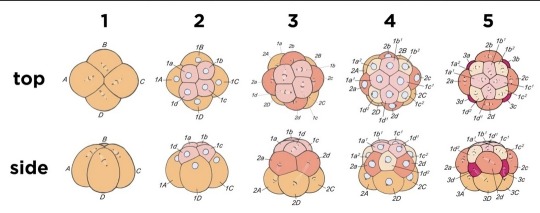
Not all of them even have "armor" so to speak. some of them ditch the idea of having a thick protective layer pretty quickly in favor of swimming in the open ocean because they were so jealous of the Butt-First Soft Speedsters. They looked a bit like this:
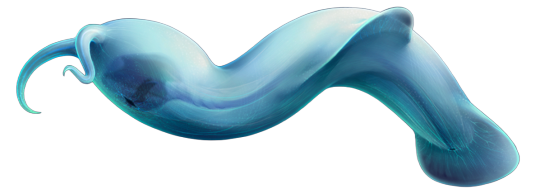
The ones that keep their armor generally wear it as a funny little hat or a backpack. this means that it can only cover part of their body, and they add to it as they grow. they kind of looked like this:
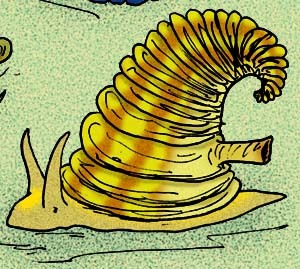
This may look like a snail but it's not, i promise you. Snails are a lot more complicated.
The second option is....
"Fuck this shit," *peels off my own skin*
This one is hopefully more self-explanatory. The drawback of this strategy being that you can only grow in bursts, it takes more energy to constantly make new skin which is generally weaker than permanent armor and when you grow you're vulnerable. The benefit is that you don't get heavier as you age and are generally more mobile and flexible.
One big thing to note is that these all have some sort of hard mouth part for biting. Kind of like teeth.
Some of them live their lives digging in the dirt like this ugly son of a gun:
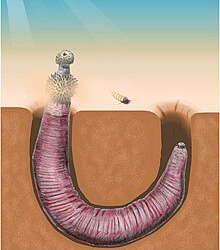
.... yeugh....
While others specialized in swimming around in the water column once again, probably because all the cool kids were doing it and they wanted to feel included. These guys were usually WAY smaller than the other ones doing it.

Sometimes almost microscopic.
Finally, Some of the skin-yeeters decided they wanted legs for walking on the sea-floor. Some of them also had spikes.
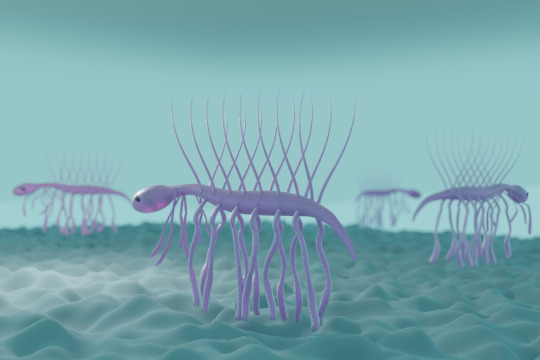
some of the art is really spooky looking but i think these guys look kinda cute in this one
16 notes
·
View notes
Note
the spine is a segmented body part & thus has always been easily repeatable (see: convergently snaky lineages of reptiles) but AFAIK chordate organs never have been—fish can’t easily duplicate their hearts either—and it’s a combination of cephalization, segmentation, and metamerism. Cephalization tends to produce organs like complex brains, which then can’t be easily repeated throughout your segments for energy cost reasons. Segmentation and metamerism describe structural elements in development and whether something can be easily repeated; things which are segmented are easy to duplicate, things which derive from metameres can also be repeated easily, but if a body part isn’t segmented or your metameres fuse together in development into complex tagmata (the insect head, for instance) they get hard to repeat again.
I’m pretty sure this “split” (having many unfused metameres vs. having very few) can’t be exactly pinpointed but I would guess most of it for chordates happened sometime after the deuterostome/protostome split, and more of it happened sometime around the Echinodermata/everyone else split, echinoderms being the only deuterostomes I can think of with even vaguely similar modularity to arthropods. It’s possible for many sea stars to just add legs in development (Pycnopodia helianthoides develop at least 16 legs but may have as many as 24) with no ill effects.
It also seems easier for the Bilateria generally to go from singular to paired than from anything to triplicate (see: zero extant animal lineages with triradial symmetry, and only one extinct, RIP Trilobozoa; ancient fish probably had one swim bladder, but most modern species have two; cephalopods have three hearts but it’s actually a singular systemic heart and a pair of branchial hearts). Bilaterians, echinoderms excepted, really like pairs of things.
fascinating! thanks for the info.
18 notes
·
View notes
Text
Favourite animals poll! Round 2
Bilaterians won the first round.
Time for Round 2.
It is about the so-called 'super-phylums' of the Bilaterians.
#is the plural phylums or phyla?#animals#poll#animal polls#clades#not sponges#topuunf2d#*#round 2#linnaeic categories#bilaterians#so called 'syper -phluymns'#whhops tyopp#deuterostomes#protostomes#thank yall for voting#favourite animales poll
0 notes
Text
Clade of the Day: Mancerxa

Welcome to Clade of the Day, where we cover different groups of organisms on Sagan 4. Today's clade is the kingdom Mancerxa, which contains plents, ukfauna, whorls, and their microbial relatives.

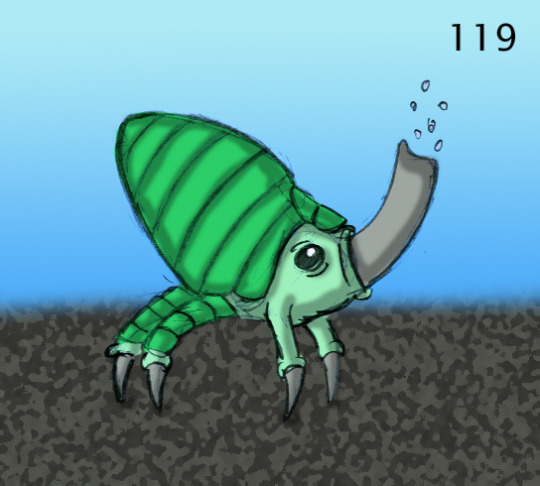
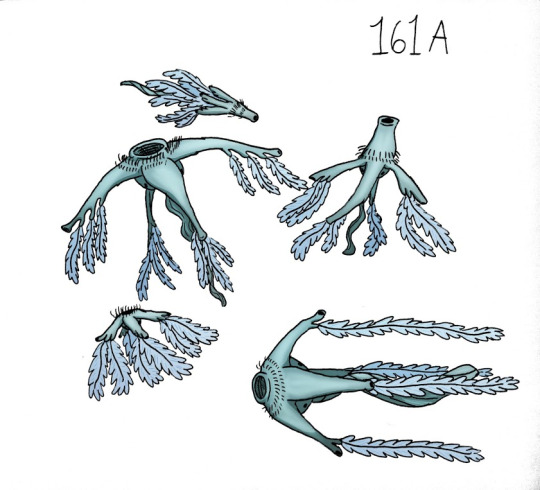

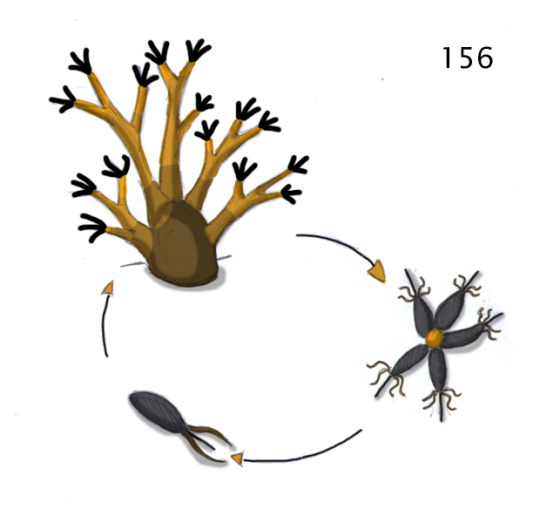
(sources: x/x/x/x/x)
The mancerxa evolved from motile, mixotrophic algae. However, all living mancerxans with the exception of the plents are obligate heterotrophs which went through a stage of being parasites in the deep sea. Of note, plents are also anatomically backwards (and technically sideways, too) compared to other mancerxans, not dissimilar to some of the differences between Earth's protostomes and deuterostomes.
Mancerxa is perhaps Sagan 4's most historically popular kingdom, with the plents alone accounting for a significant portion of the planet's biodiversity (remember that Sagan 4 is powered by user submissions). There are nearly 1,300 mancerxans recorded on the Sagan 4 wiki, which means they account for somewhere close to 1/4 of all submissions. Likewise, with so much diversity, they tend to bounce back from mass extinctions and only rarely has any major group of them been completely wiped out.
--
Homepage | Forum | Discord
#sagan 4#speculative evolution#clade of the day#speculative biology#spec evo#creature design#species concept#creature concept#science#taxonomy#worldbuilding#spec bio#alien species#original species
5 notes
·
View notes
Text
How many times did the ability to concentrate calcium and make calcium carbonate structures evolve? All of craniata have it (but NOT all of chordata, tunicates don't AFAIK), mollusca has it, as does arthropoda, but not all protostomes cuz annelida don't (unless they lost it?), some echinoderms have it so did it evolve four times? More? Or is it ancestral to chordata and tunicates lost it (?!)
24 notes
·
View notes